Whenever a building has more than one floor, it will include its staircase. These have become an essential architectural element due to their functionality. The good thing is that, like architectural styles, many types of stairs allow you to break with everyday life.
Depending on the structure, some stairs will be much better for our home or business. In addition to adapting to the needs of the people who will use it, these can also be visually attractive
Selecting the right ladder can be difficult even for an architect. Each occupies a variable amount of space and has a different cost. However, today we present a guide that will help you choose between the different types of staircases available and how you can adapt them to your home.
Defining a staircase
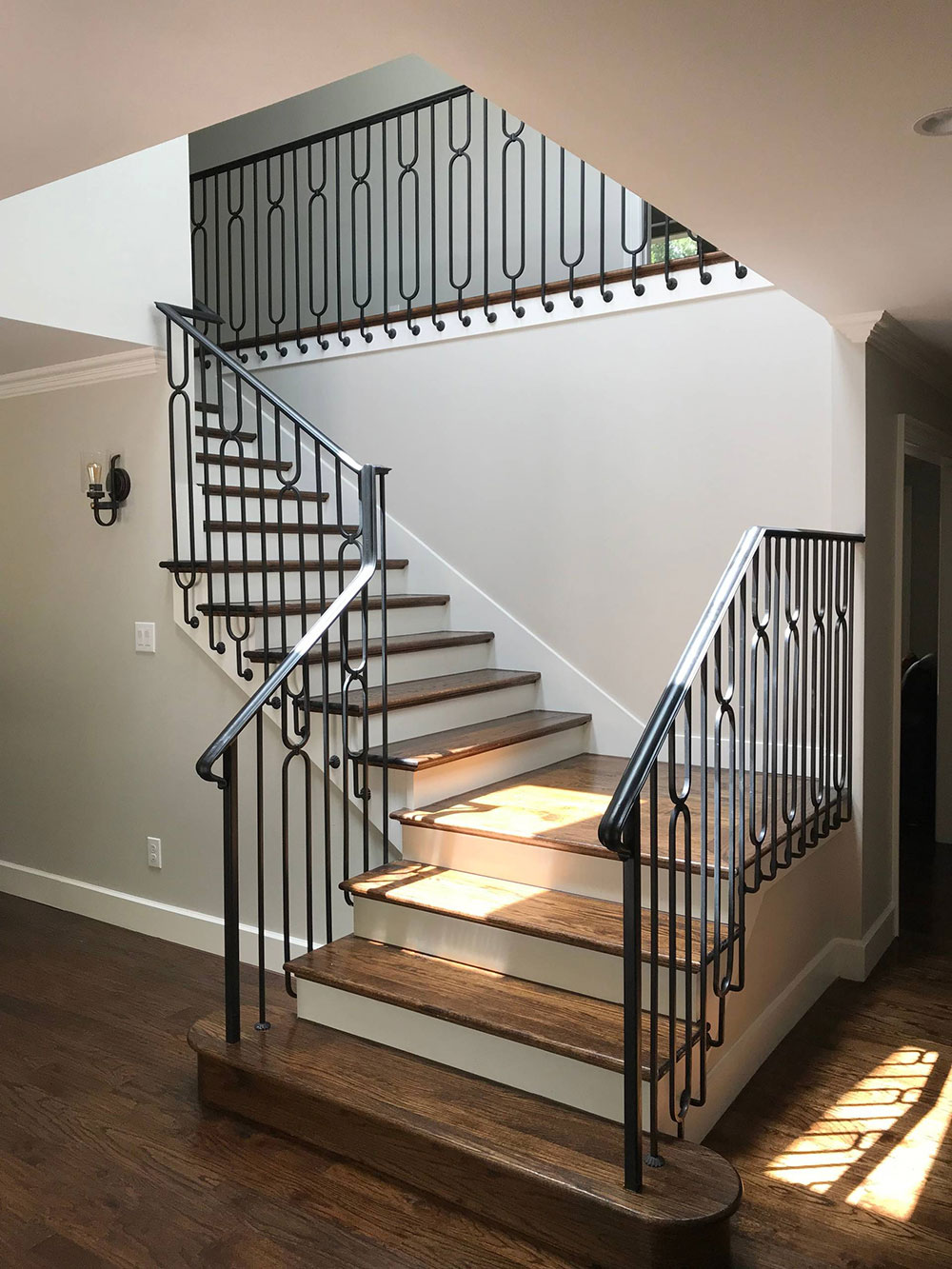
Image source: Ellyn Amador, Architect
A staircase is an element that allows us to move between the different floors or levels of a structure in a pedestrian way.
There are two formats of stairs: ladders, which tend to be built to save space and consist of horizontal bars in which we must stand with feet and hands to use them; and staircases, which have steps that are stacked diagonally, so we can easily walk on them.
Another common name to refer to the entire structure, including handrails, is the stairway.
The types of stairs
As we indicated previously, although the stairs fulfill the primary function of connecting two levels to move between them, they can have multiple designs to fit the available space and the visual style of our home.
Some of the elements that can be modified on the stairs include the construction method and the type of structural support, the materials to cover it, and the style of the tread, nosing, and riser.
The Spiral Staircase – To save space
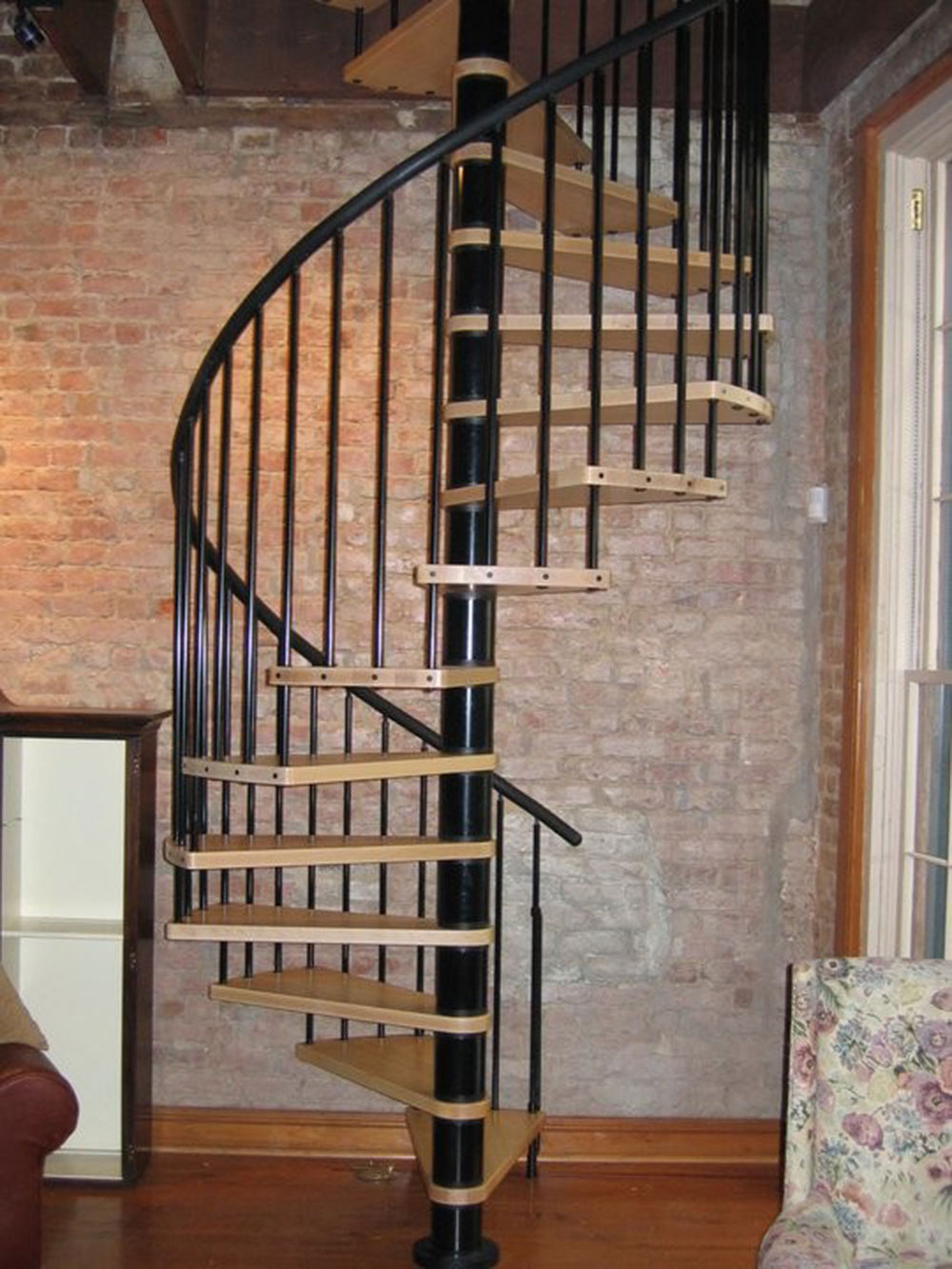 Image source: The Stairway Shop
Image source: The Stairway Shop
Spiral staircases are one of designers’ favorite types of stairs when there is not much space to build.
The ladder distributes each of its steps in a circular way around a central axis without separating widely from it, which allows climbing enough to have the minimum height that allows the passage of people.
The space it occupies will depend exclusively on the diameter of the steps, not needing long horizontal distances for its construction. Due to the practical and small design, these stairs are widely used in minimalist homes.
The Straight Flight Stair – Imposing and basic
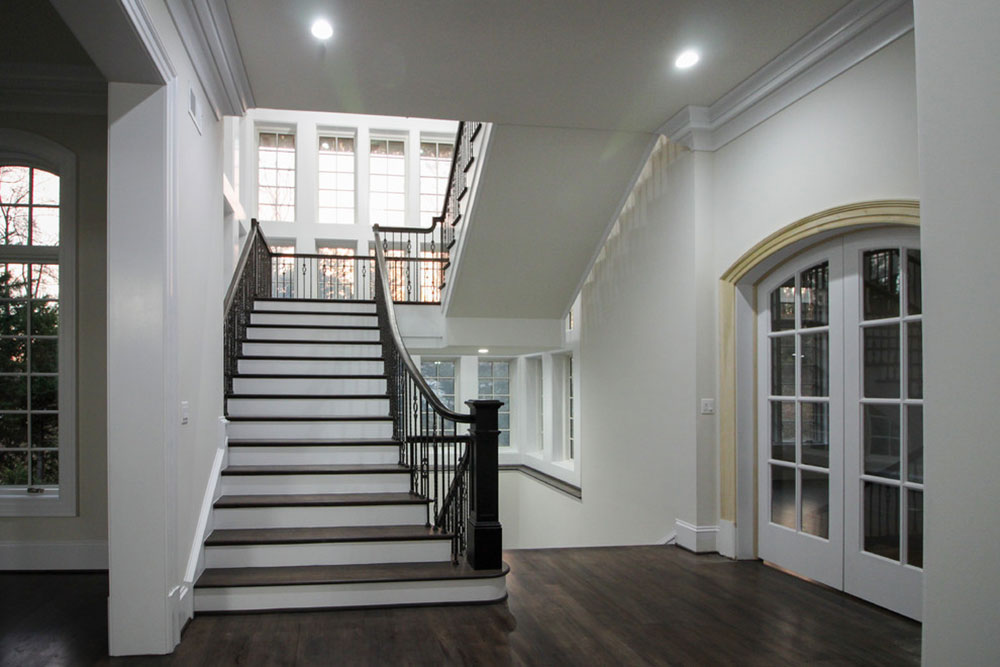 Image source: Century Stair Company
Image source: Century Stair Company
The straight staircase is the most basic stairs design of all. As the name implies, it keeps the first and last steps aligned in a straight line.
Usually, a good number of steps are required so that the ladder is not steep. To reduce the fatigue of the users, in the middle of the stairs (sometimes in every third, depending on the distance) there is a rest of the same width of the steps.
Although these stairs can be very elegant and allow for unique customization, they have the negative point that a long distance is needed to locate them. The good thing is that as soon as the steps reach a height of 1.90 meters, the lower space can be used to build additional rooms, such as closets and bathrooms.
Arched staircase – Elegant and complex
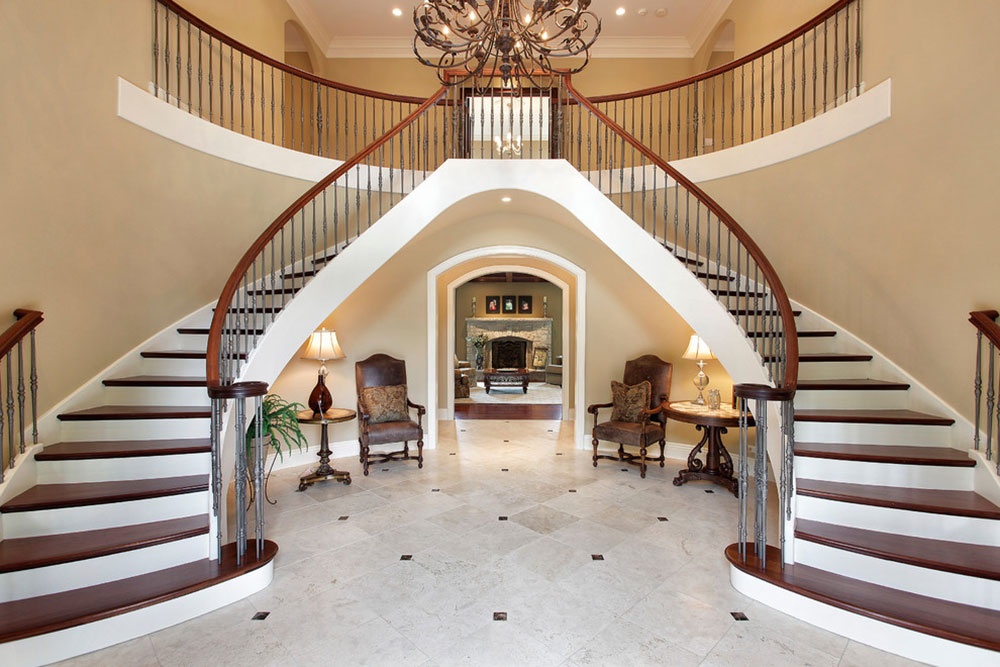 Image source: Raugstad Inc.
Image source: Raugstad Inc.
You’ve probably seen them in some castle, mansion, or fairy tale. The arched stairs are those whose steps are wedge-shaped, but this distance is so small that by joining them they form a kind of arch where you can easily walk.
The arched staircase works perfectly as a central element in large rooms and lounges. It does not necessarily have to be attached to a wall, so you can use the leftover space from any of its sides.
Like straight stairs, these require a lot of space for their installation and are even more complicated because they have the arch since a measure of width has to be considered and in which direction the first step will end.
Curved staircase – A bold appearance
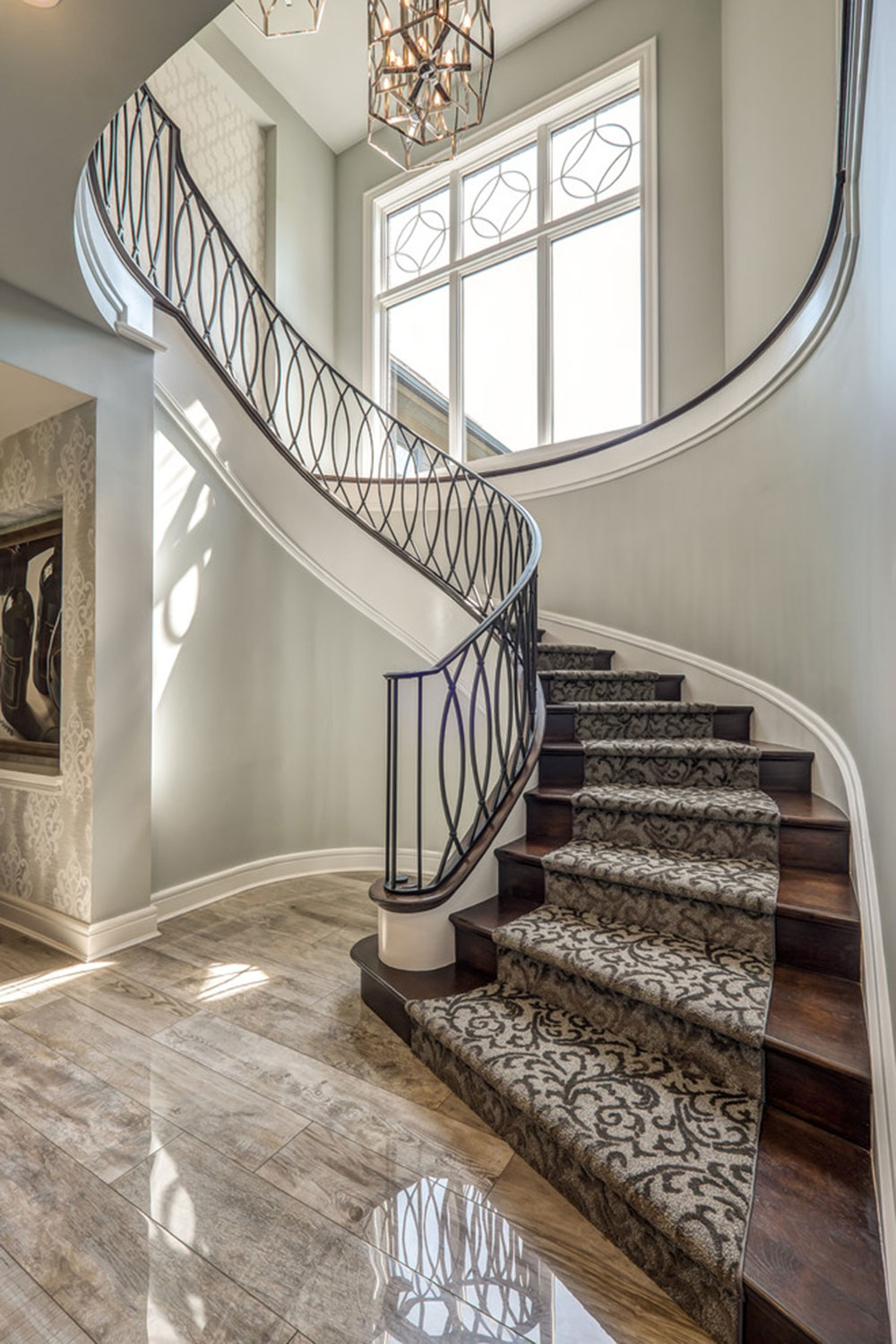 Image source: Debbie Sykes
Image source: Debbie Sykes
Although very similar to spiral staircases, a curved staircase (also called helical) does not have a physical spine that supports the rungs to the axis. These, on the other hand, are located along two stringers that are wound around the central axis, each with a different diameter.
Helical stairs can stay in the middle of the route, not completing the 360 degrees turn when they reach the last step. Due to their nature, they take up more space than spiral stairs, and they need a stronger structure to support themselves.
Usually, these types of stairs are built in art galleries or avant-garde houses.
L-Shaped stairs – A traditional variant
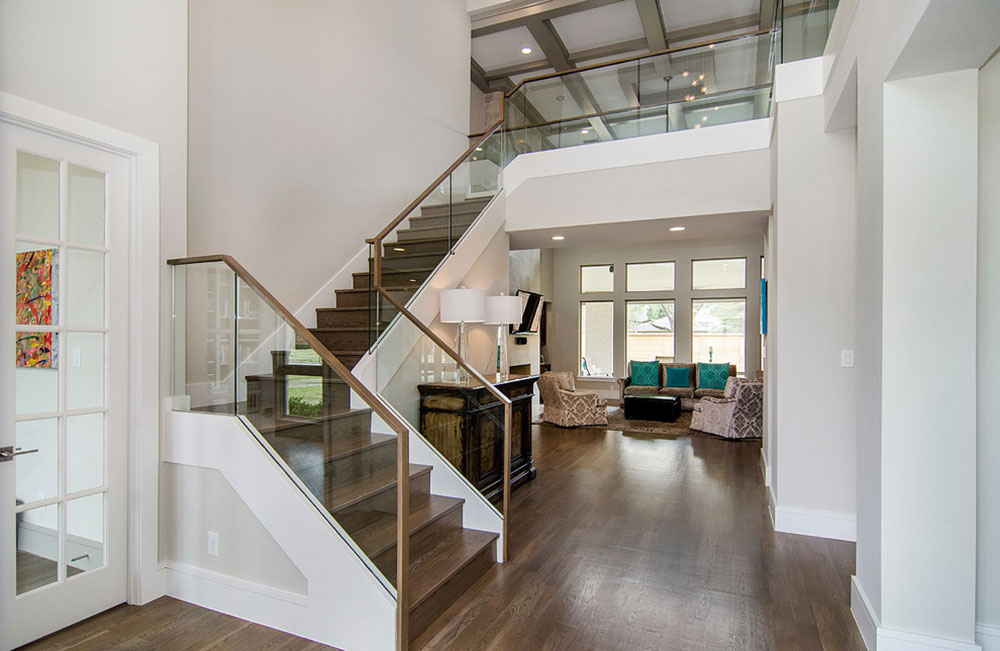 Image source: John Lively & Associates
Image source: John Lively & Associates
When there is not enough space to build a straight staircase, you can always choose to make a turn at the rest. If the deviation is 90 degrees, we are facing an L-shaped or quarter-turn staircase.
This is the best option when building the staircase in a corner. It has good support and allows the creation of a small room under the second half of the stairs (the one that comes after the rest). Also, this staircase does not generally allow rooms or halls on the upper floor to be seen.
There is a variation called Winder Stairs, which retains the L-shape, but instead of having a rest in the middle of the path, it implements wedge or triangular steps to maintain the continuity of the design.
Winder Staircases do not enjoy as much popularity as their counterpart, being more common in old homes. Although architects of modern styles are currently using them more, they still occupy the position of being an “additional staircase” in homes.
U-Shaped Staircase – Round Trip
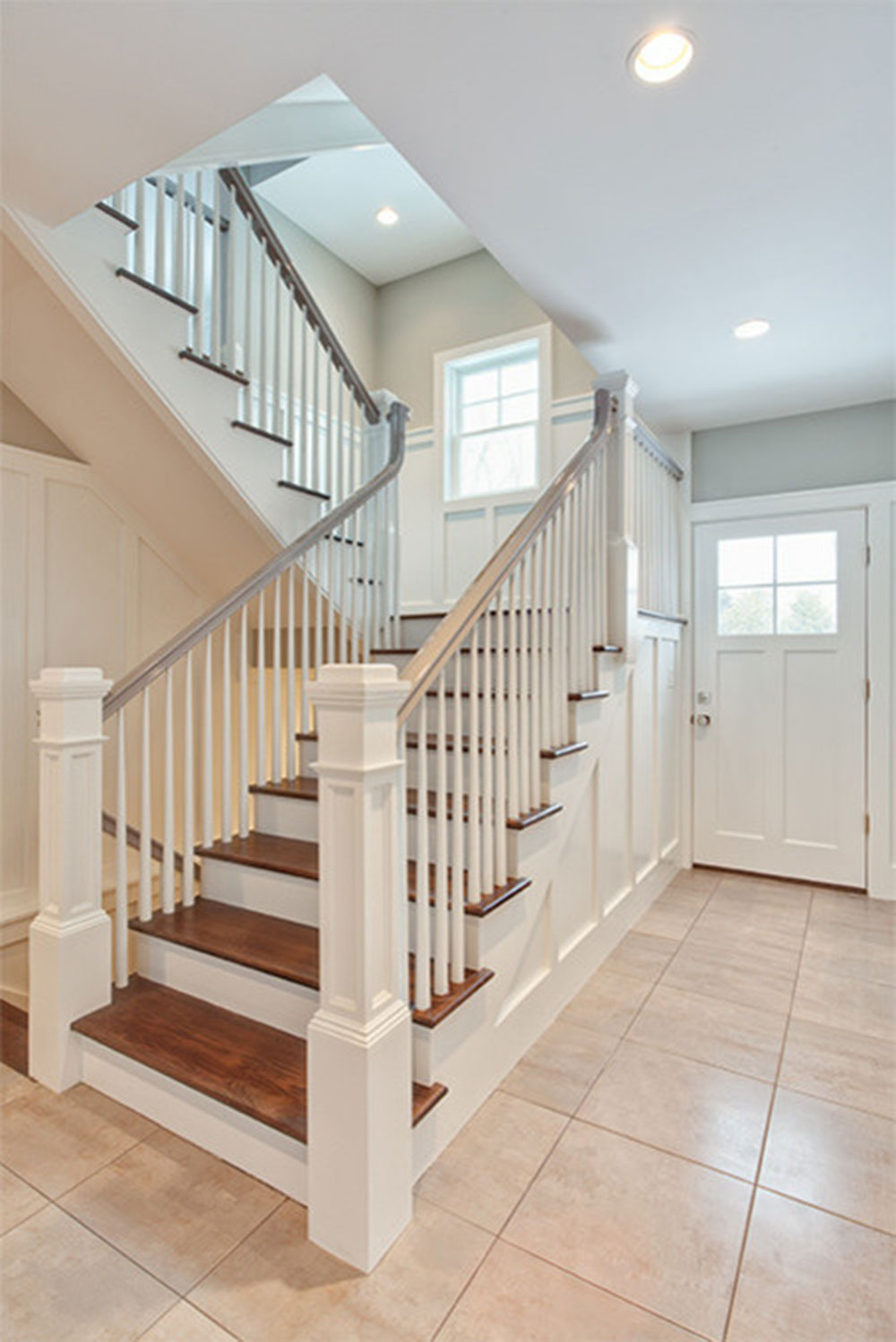 Image source: Karp Associates Inc.
Image source: Karp Associates Inc.
Again, this staircase lives up to its name by presenting a 180-degree turn in the middle of its path. This design occupies half the length of a straight staircase, but at least twice the width is needed to make the turn.
Also called 2/4, this style has multiple configurations depending on the tastes of each person. Some decide to create a wider rest to leave an opening between the two halves of the stairs. Other people prefer to create an open staircase that does not use railings. Finally, there are those who, instead of making a rest in the turn, install wedge-shaped or triangular steps.
Floating Staircase – Challenging Gravity
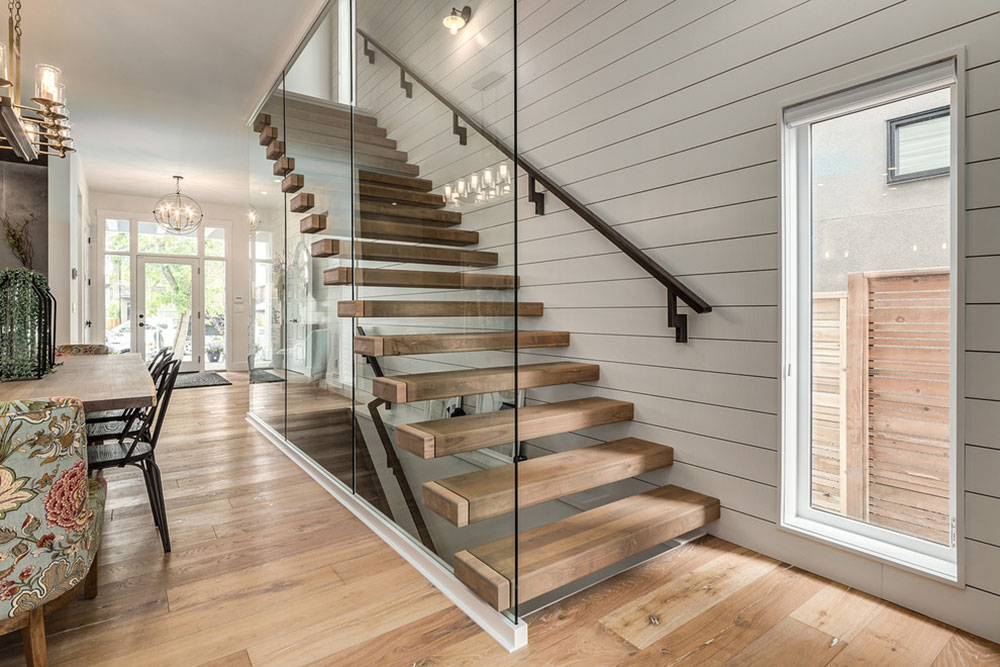 Image source: Trickle Creek Designer Homes
Image source: Trickle Creek Designer Homes
A style that is being widely implemented in modern and avant-garde houses is that of straight stairs that do not have any support at the bottom. These, instead, are embedded to the wall step by step, so that it looks like they are floating.
For them to have the necessary strength, metal, plastic, concrete or stone is used as a construction material.
Floating stairs, however, represent an engineering challenge. One way to better distribute the weight on them is to install columns or a glass wall, creating an effect similar to not having anything to hold them.
Compact stairs – The ultimate solution for lack of space
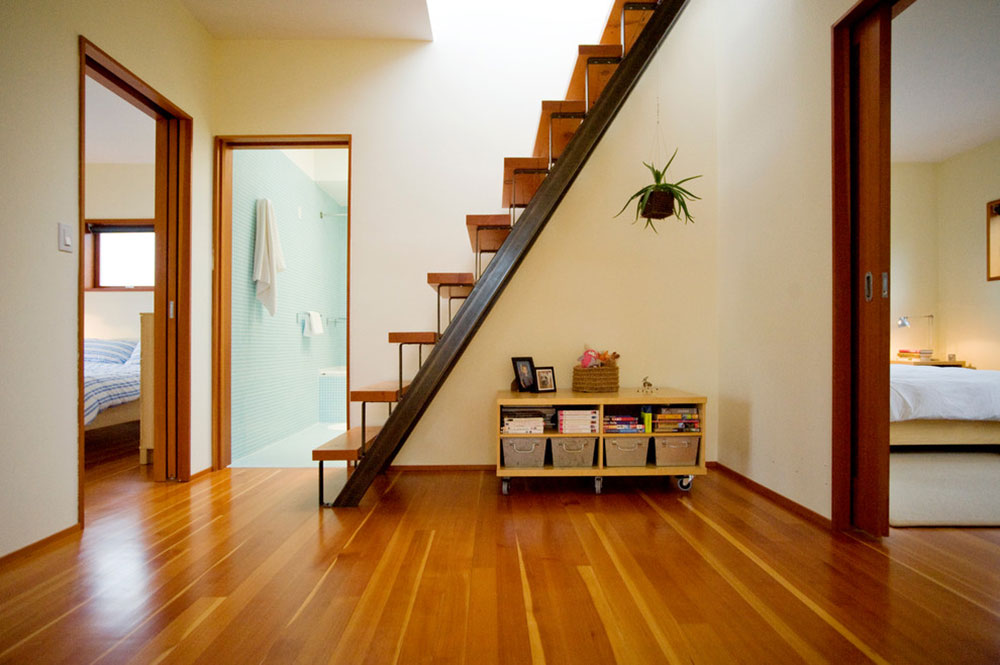 Image source: SOS Design
Image source: SOS Design
Modern designers devised a staircase that is perfect for small homes, and that retains a style similar to that of larger stairs. The compact stairs are constructed in multiple forms: curved, straight, L-shape, etc. What distinguishes them from the rest is that the steps only allow one foot per step.
By slightly offsetting the halves of the even and odd steps, it is possible to “mount” one step over another, so only half of the total length of the traditional stairs is required to go up one level.
Although it is a smart solution, it is not the safest of the options. They are not comfortable to use, and often the steps have very wide heights to use as few of these as possible. They are usually used in retractable ladders for attics.
Ladder Stairs – In the vertical direction
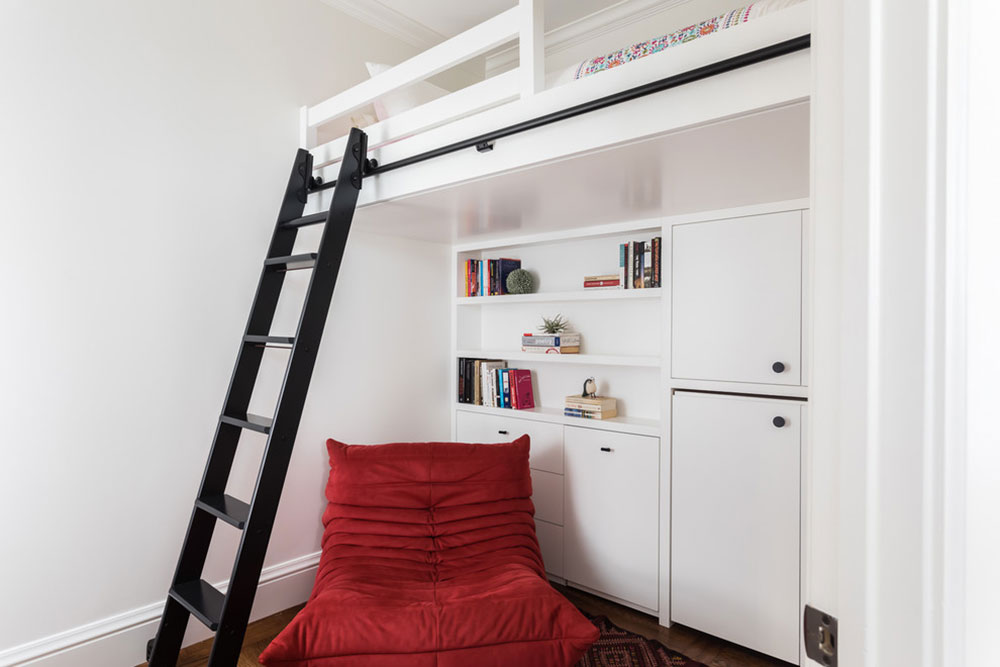 Image source: JMJ Studios
Image source: JMJ Studios
The ladder stairs are the first type of ladder we mentioned in the article, which requires the use of hands to climb them.
Although they don’t have to be totally vertical, we will always need to hold on with our hands. At present, these types of stairs have many styles, so we will not have to install an unsightly design embedded in the wall.
Additionally, ladder stairs can never be used as main stairs in a home because of how difficult they are to use.
Split Staircase – Majestic and immense
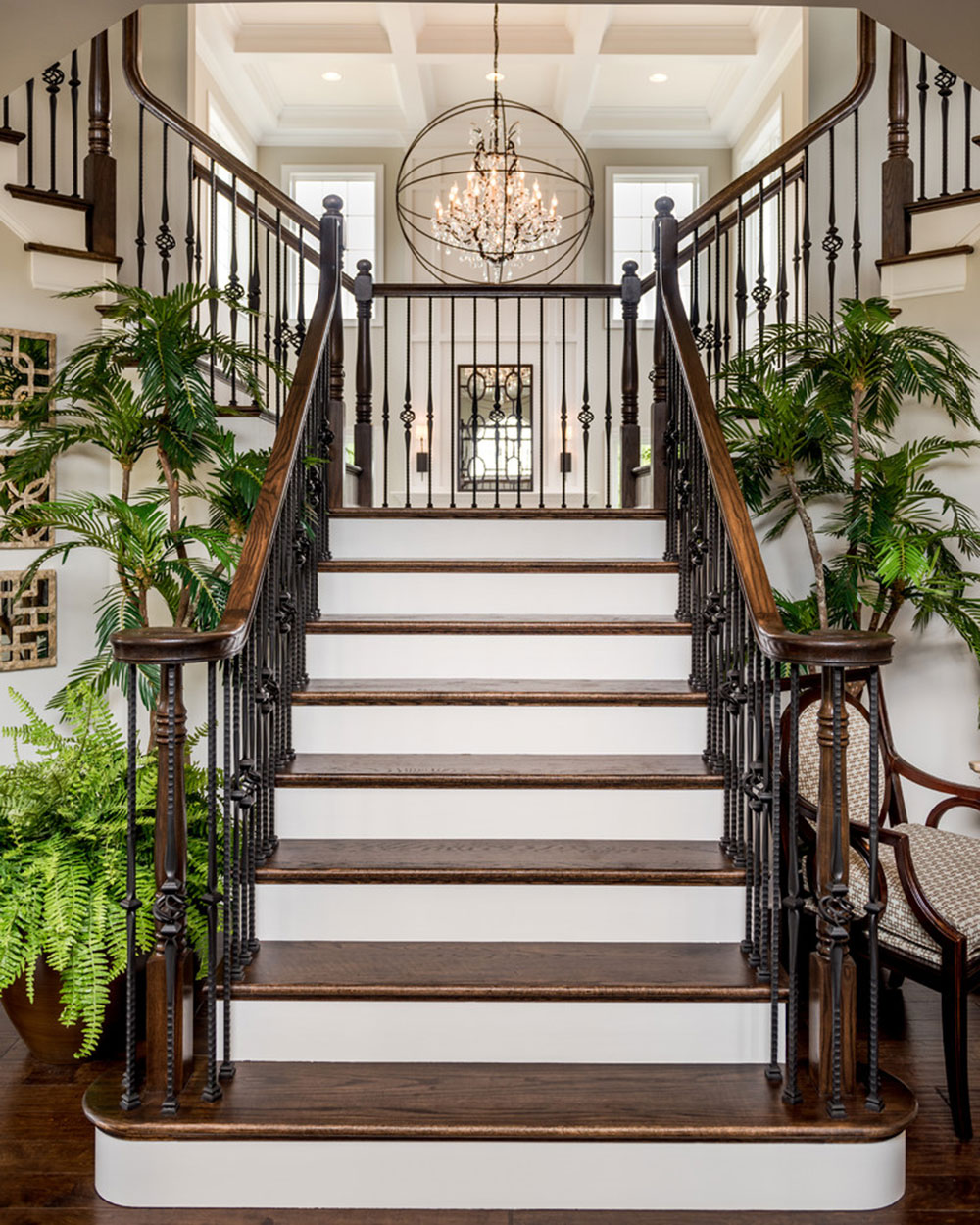 Image source: Custom Home Group
Image source: Custom Home Group
We finalize the list with another option worthy of royalty. A Split staircase is a T-design stair which starts with a single lower half of great width that split halfway into two smaller stairs.
The fork always occurs at a wide rest, and these paths may have different angles than 90 degrees, even creating a Y-shaped stair.
Opting for this style requires a very large space for its installation, but like curved stairs, these will make a unique impression, especially since they are usually built near the main entrance.
Designs that adapt to your need
Remember that the most important thing about a stair is that it is safe for its users. For this, you must choose between the types of stairs that work in your home. Remember that this element will be used constantly, so it must be safe and pleasant to use.
If you enjoyed reading this article about types of stairs, you should read these as well:
- Awesome Christmas staircase decorating ideas you should absolutely try
- Under Stairs Storage to Maximize the Space from Your House
- Spiral Staircase Pictures and Things You Should Know About Them
The post The different types of stairs that you should know about appeared first on Impressive Interior Design.
source https://www.impressiveinteriordesign.com/types-of-stairs/
No comments:
Post a Comment